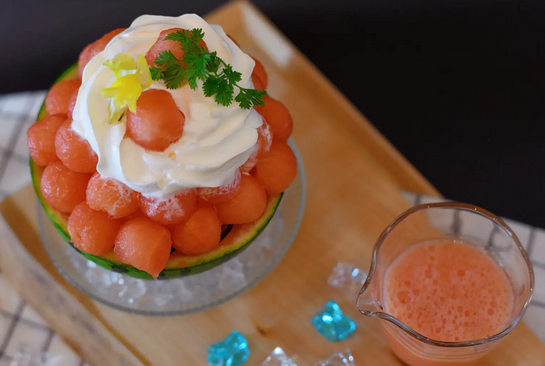
Unlike the shabby snow cones and ice slushes from the USA or the sickly sweet shaved ice in Hawaii, Kyoto kakigori is a refreshing treat enjoyed during summer months in Japan. This classic dessert consists of finely-shaved ice topped with syrups and various fruit, mochi, or other sweets. It is often served at festivals and fairs and can be found in shops throughout the country during the summer.
The origin of kakigori is unclear, but it probably dates back as early as the 11th century in Asia. It was popularized in Japan due to developments in ice machines, trade, and travel, which allowed ice to be made and transported to cities in much smaller amounts than in the past. The ice is also specially prepared so that it melts slowly and can be shaved very finely, which results in a smooth and fluffy texture. Today, there are many different kinds of kakigori to choose from.
Shaved ice is one of the most common 京都 かき氷 and beloved Japanese desserts. It is usually topped with sweet syrups and fruits, but it can also be combined with other ingredients such as ice cream and mochi, creating new flavors and styles of kakigori. The shaved ice itself is very light and refreshing, which makes it perfect for hot weather.
Many kakigori shops have special machines that shave the ice into thin, cotton-like pieces. This produces a delicate and smooth texture, similar to the texture of a snowball. The ice is also shaved at low temperatures, which allows the flavors to be well absorbed. The shaved ice is typically covered in syrups and toppings, and the mixture is stirred together with a spoon to create a creamy and refreshing dessert.
There are several places where you can enjoy kakigori in Kyoto, including some with very creative creations. At Café Lumiere near Kichijoji Station, for example, you can try a camembert kakigori with sweet berry sauce. This is a great option for those who want to try something other than the traditional strawberry or green tea kakigori.
You can also find a shop that serves natural kakigori, which is shaved from ice blocks that have been frozen in the mountains at cooler altitudes. These are very rare and hard to come by, but the ice is especially slow to melt, and this type of kakigori has an even fluffier texture than regular shaved ice. The ice is shaved with a special machine and then layered with syrups and fruits.
Fuwa uji kintoki is another Kyoto specialty kakigori, which is a combination of matcha shaved ice and red bean paste. The shaved ice is drizzled with a lot of matcha syrup, and the red bean paste adds a subtle flavor to the dessert. You can find this kakigori at the Gion Shijo and JR Uji stations of Itohkyuemon, as well as other locations in Kyoto.